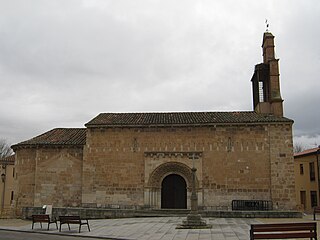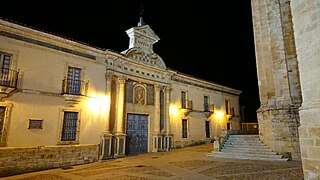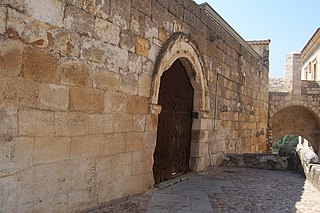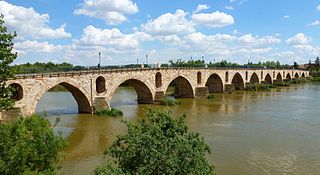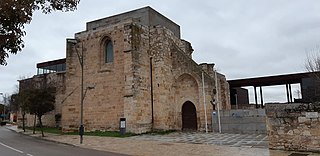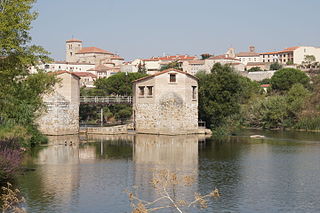Self-guided Sightseeing Tour #2 in Zamora, Spain
Legend
Guided Free Walking Tours
Book free guided walking tours in Zamora.
Guided Sightseeing Tours
Book guided sightseeing tours and activities in Zamora.
Tour Facts
1.9 km
62 m
Experience Zamora in Spain in a whole new way with our self-guided sightseeing tour. This site not only offers you practical information and insider tips, but also a rich variety of activities and sights you shouldn't miss. Whether you love art and culture, want to explore historical sites or simply want to experience the vibrant atmosphere of a lively city - you'll find everything you need for your personal adventure here.
Individual Sights in ZamoraSight 1: Iglesia de San Claudio de Olivares
The church of San Claudio de Olivares is a Romanesque temple located in the city of Zamora (Spain), in the neighborhood of Olivares. Some historians consider it to be the oldest surviving Romanesque architecture in the city. It is also known because the Christ of Amparo is worshipped there, crucified and on the night of Holy Wednesday it is taken out in procession by the Brotherhood of Penance.
Sight 2: Aceñas de Olivares
The Olivares Aceñas are a group of this type of mill located on the Duero River channel, in the Spanish city of Zamora. They constitute one of the five sets of aceñas that still subsist in the city, although all already out of productive use since the beginning of the 20th century, along with those of Pinilla, Cabañales, Gijón and the Pisones. They have been rehabilitated and consolidated to install in them the interpretation center of the traditional water industries. The project, with an investment of € 317,000, was in charge of the architects Francisco Somoza and Pedro Lucas del Teso, who received a special mention in the "Hispania Nostra" awards in 2008.
Sight 3: Palacio Episcopal
The Episcopal Palace of Zamora is an episcopal building located in the old town of the city of Zamora, Spain. The city was granted the bishopric in the tenth century, creating the diocese of Zamora during the reign of Alfonso the Great. The first bishop was Atilano. The building that can be seen today is the result of a major remodelling carried out in the seventeenth century during the bishopric of Cavanillas (1755-1766). The last restoration dates from the twentieth century that stands out for the roof installed over the courtyard. The Romanesque image of the Virgin of La Cerecina stands out from its interior.
Sight 4: Casa del Cid
The Casa del Cid is a Romanesque-style civil building located in the city of Zamora (Spain). Since 1931 it has been protected by having been declared a historic-artistic monument. This building is located next to the Optima, Olivares or Bishop's Gate, the latter name because it is open next to the episcopal palace. It is therefore located in a privileged place in the old village, occupying part of the walls, allowing views of the Duero.
Sight 5: Puente de Piedra
The Zamora Stone Bridge is one of the five bridges that cross the Duero River as it passes through the capital of the province of the same name.
Sight 6: Convent of San Francisco
The convent of San Francisco Extraponte was a Franciscan institution built in the fourteenth century in Zamora. It is known for having been the resting place of the polygrapher Juan Gil de Zamora, a close collaborator of Alfonso X the Wise and tutor of his son, Sancho IV of Castile. The name "extraponte" comes from its proximity to the old bridge. The convent is in a state of restoration at the beginning of the 21st century. The Dean's Chapel was built in the 16th century under the direction of Gil de Hontañón and since 2007 it has housed an exhibition and conference hall. Since 1994 it has been the headquarters of the Rei Afonso Henriques Spanish-Portuguese Foundation.
Sight 7: Aceñas de Cabañales
The Cabañales watermills are a group of mills located on the bed of the Duero River, in the Spanish city of Zamora. They constitute one of the five sets of watermills that still exist in the city, although all of them have been in productive use since the beginning of the twentieth century. They coexist with other watermills such as those of Olivares, La Pinilla. Both were in the possession of the cathedral chapter until the twentieth century. These watermills are located upstream of the Piedra bridge, on the left bank.
Share
Disclaimer Please be aware of your surroundings and do not enter private property. We are not liable for any damages that occur during the tours.
GPX-Download For navigation apps and GPS devices you can download the tour as a GPX file.
